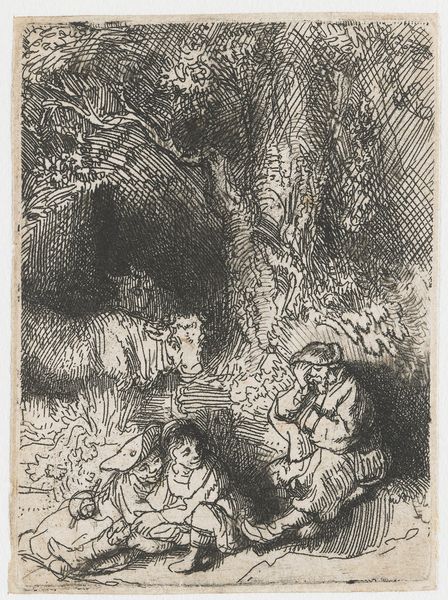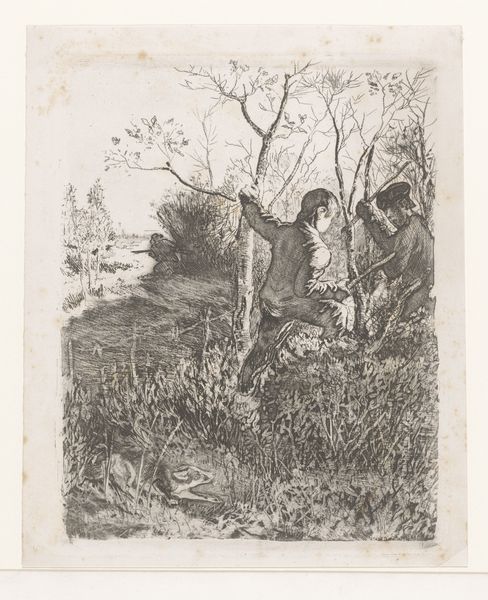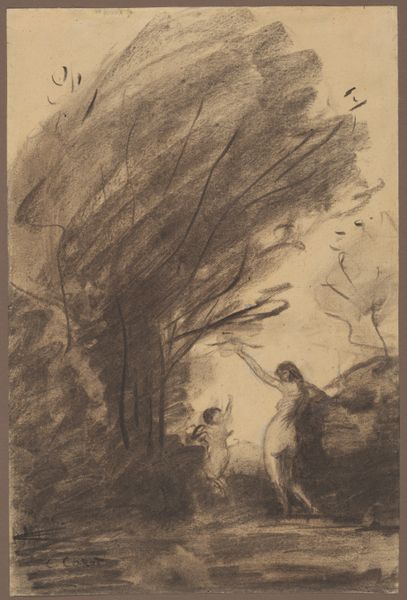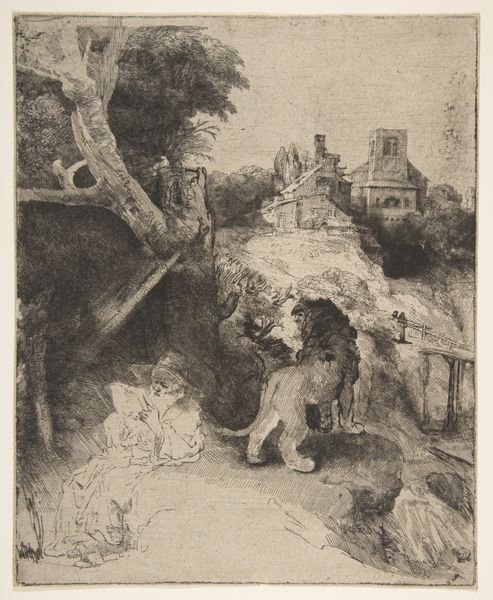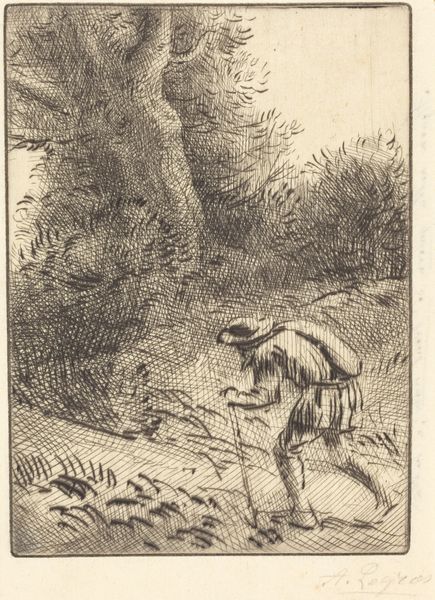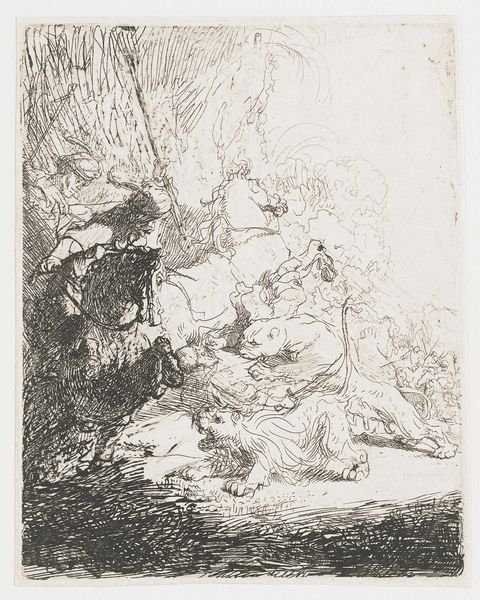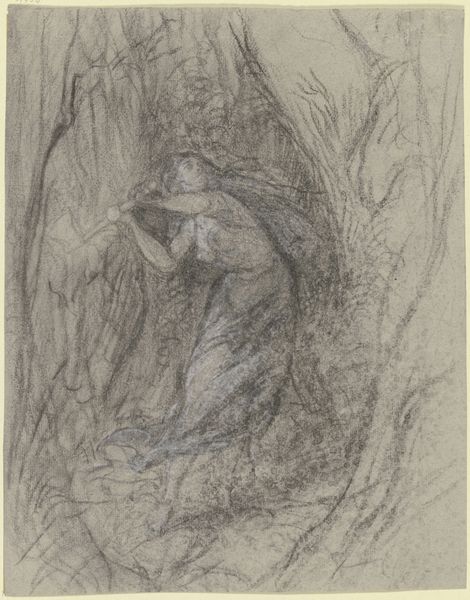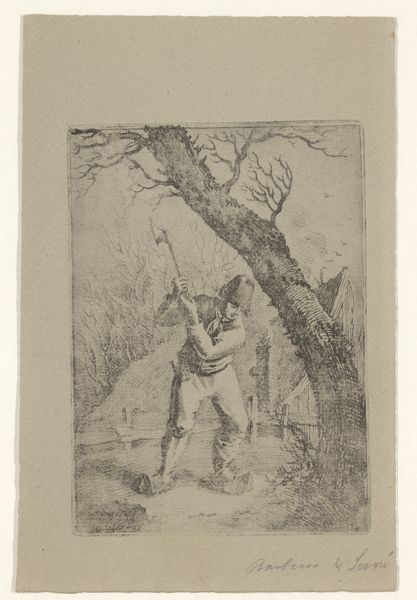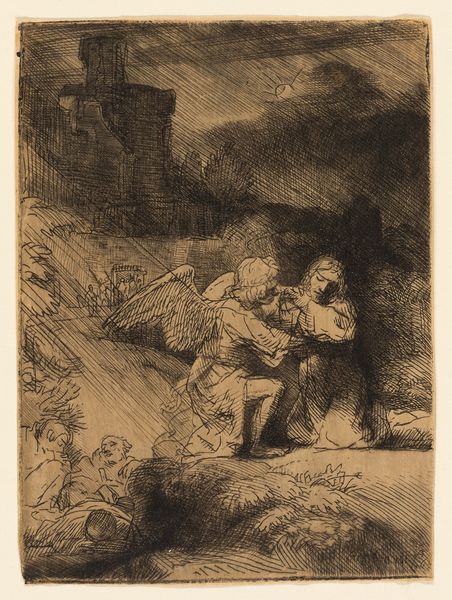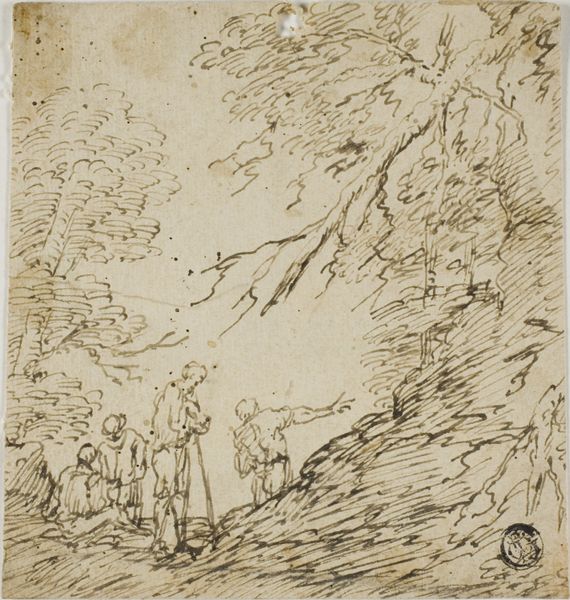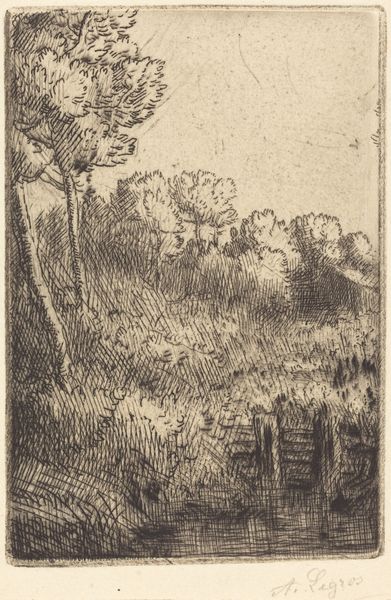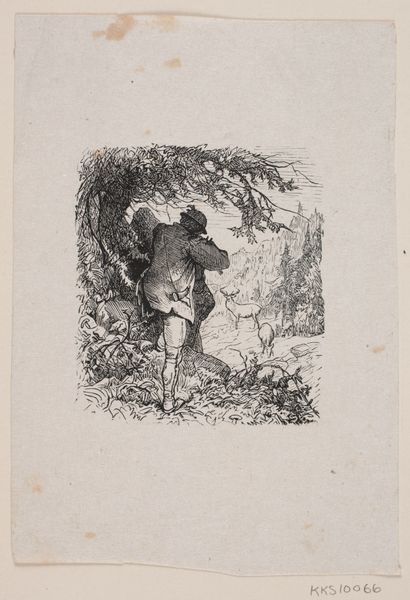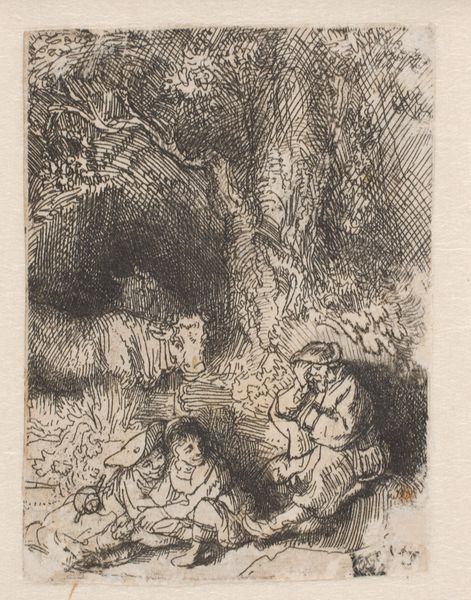
drawing, ink
#
drawing
#
ink drawing
#
landscape
#
figuration
#
ink
Dimensions: 234 mm (height) x 184 mm (width) (bladmaal)
Curator: This is "Trillevip" an ink drawing completed in 1917 by Niels Skovgaard, located here at the SMK. It depicts a folkloric scene, quite whimsical at first glance. What's your immediate reaction to it? Editor: It has this darkly playful air. I am struck by the precarious nature of the impish central figure. He appears to be on the verge of tumbling downward, out of the scene entirely, and the presence of the looming megalith amplifies this. The figure at the top of the frame, overlooking the unfolding scene from a safe distance, evokes conflicting feelings, adding another dimension. Curator: Skovgaard comes from a family of artists rooted in portraying the Danish landscape, often incorporating elements of folklore. In this drawing, we see his play with these themes. The megalith, a feature of the Danish countryside, seems to watch over the chaotic scene as the Trillevip appears to joyfully roll downhill. What kind of commentary, if any, do you believe this artwork makes about socio-political or ideological issues prevalent at the time? Editor: Interesting! At the time, Denmark was navigating its neutrality during World War I, a precarious position not unlike that of the tumbling figure in this work. Perhaps Skovgaard is subtly commenting on Denmark’s position: appearing joyful and unburdened but actually on shaky ground, watched over by the silent, looming monuments of its own history. The drawing makes me think of national identity during a period of dramatic change, suggesting anxieties and also the forced optimism a neutral nation may have performed. Curator: The folk figure almost appears liberated, right? Free from historical constraint and moving downwards as a single entity with nothing to worry about, especially under the watchful eye of that paternal figure? I can see that. It makes me think, perhaps Skovgaard used folk themes to discuss modern challenges indirectly, thereby sidestepping censure while expressing subtle criticism, using this playful rendering. The choice of ink, creating this dramatic, almost theatrical lighting, strengthens that impact. Editor: The lighting absolutely frames the descent in a narrative way. But I can also read that downward motion as a metaphor for social descent, reflecting on those left behind in Denmark's economic growth during the period. We are reading between the lines here, though. What’s important to remember is that art creates dialogue around cultural narratives. This image embodies complexity – we can consider so many readings, from anxieties surrounding political history to class dynamics. Curator: Indeed, and regardless of Skovgaard's intent, the piece now stands as a reminder of that complex period, interpreted through the lens of folklore and the artist's unique vision. Thank you for lending your insights, which have definitely enriched my appreciation of the piece! Editor: My pleasure. These layered readings allow for a more engaging relationship with artworks across generations.
Comments
No comments
Be the first to comment and join the conversation on the ultimate creative platform.
